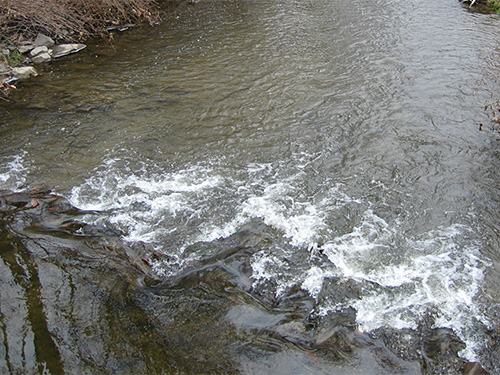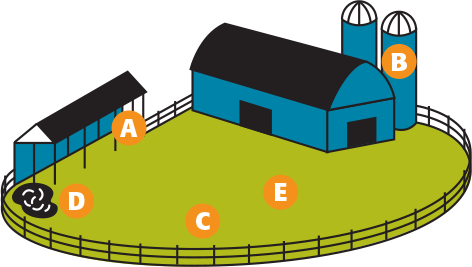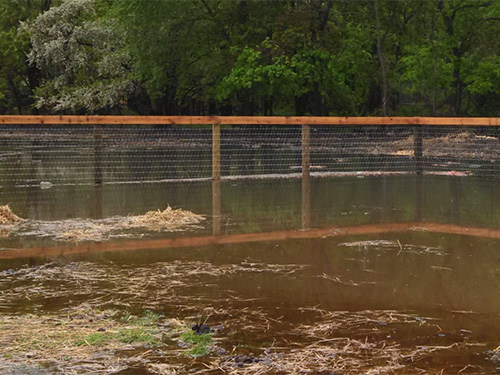
Rainfall can generate signifcant runoff around your facility that can run off into water bodies and/or produce mud. By implementing some simple stormwater management practices you can reduce the potential for non-point source pollution and negative water quality impacts. A signifcant amount of runoff can be diverted away from barnyards, manure storage areas, and stall areas reducing the potential for animal waste to be washed away.
Several ways to manage stormwater runoff are:
- Install gutters, down spouts and splash blocks on all animal barns and shelters
- Divert all ‘clean’ water away from ‘manure areas’
- Maintain roof gutters/downspouts to fow away from buildings
- Add drains, underground outlets and berms where needed
- Install diversions that direct stormwater containing manure into vegetative bufer areas
- Separate manure storage areas from ‘clean water’ areas with grass buffer strips
Buffers and field borders should be used to reduce animal waste from entering streams, wetlands, wells, and other water areas during storm events. Stream bank fences can be used to reduce animal access to streams and wetlands.
Barnyard Runoff Management Plan

A Runoff from enclosed confined facilities
B Runoff from silage storage areas
C Runoff from open confined areas
D Runoff from manure storage areas
E Facilities wastewater
- Storage for up to and including a 25-year, 24-hour frequency storm
- Minimize contamination of groundwater
- Manage stored runoff and accumulated solids from facility through an appropriate waste utilization system
- Storage structures should have an earthen lining of clay or plastic membrane lining, constructed of concrete, or be a storage tank.
(Source: U.S. Environmental Protection Agency, 1993a.)



